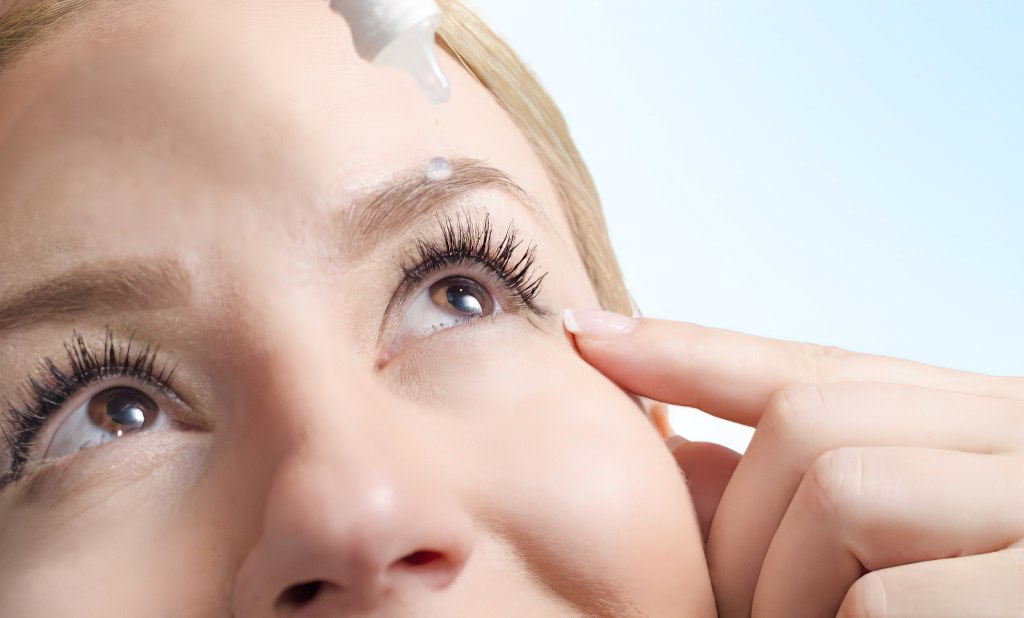Can You Wear Contact Lenses if You Have Dry Eye Syndrome?
The itchy, burning eyes that one deals with when they have dry eye syndrome are incredibly unpleasant. Sometimes, we experience dry eye symptoms for reasons beyond our control, like the climate or aging. But other times, a simple change in contact lens type or cleaning solution can solve your dry eye problem.
Suppose you’re suddenly experiencing symptoms like a scratchy sensation, red eyes, or sensitivity to light. In that case, you should see an optometrist for an eye examination. They can rule out more serious conditions and hopefully get to the cause of your symptoms. Then they can provide you with a treatment plan to get your eyes feeling great again.
What is Dry Eye Syndrome?
Dry eye syndrome, also known as dry eye disease or sometimes simply as dry eye, is a prevalent condition. Typically older adults are at a higher risk, but other things, such as climate or wearing contact lenses, can also cause it in younger people.
At its root, dry eye is where your tears aren’t doing their job. Sometimes this is due to inadequate tear production, and other times it’s because they evaporate too quickly. These tears issues can actually come from various sources:
- Age: As we get older, certain parts of our bodies just don’t work as well anymore. Our eyes and their tear production are often one of these malfunctioning parts.
- Medication: Various medications can cause dry eye. Suppose you’re using long-term medication that’s causing these issues. In that case, discussing an alternative option with your doctor may be a good idea.
- Meibomian gland dysfunction: These glands produce oil that mixes with your tears to prevent them from evaporation too quickly. If the glands aren’t working correctly, dry eye can result.
- Climate: Windy, smokey, and dry weather all increase risk for dry eye symptoms.
Can Contact Lenses Cause Dry Eye?
Unfortunately, for contact lens wearers, dry eye symptoms are not uncommon. According to one study, around half of all wearers will experience contact lens-related dry eye symptoms. Typically these issues arise from wearing the lenses for too long. However, lens type and care can also play into whether or not you experience these uncomfortable symptoms.
Before throwing out your lenses or trying a new type, it’s important to get an eye examination. The eye doctor can rule out any underlying causes of the dry eye and recommend the best treatment option.
For example, it’s as simple as changing your contact lens cleaning solution sometimes. Some people are sensitive to certain brands or formulations, which can cause uncomfortable dry eye symptoms. Additionally, not all types of solutions are compatible with all contact lens types.
Contact Lens Options With Chronic Dry Eye
If your eye doctor discovers that your contact lenses are to blame for your itchy, dry eyes, here are some recommendations they may make:
- Wearing soft contact lenses with a higher water content helps keep your eyes from drying out.
- Increasing the size of the contact lenses you’re wearing; switching to a scleral lens, for example.
- They may recommend switching to a soft or rigid gas-permeable lens if you’re currently using a hard lens. Another good option is daily disposables.

Dry Eye Syndrome Treatment Options
If contact lenses aren’t the cause of your dry eye, you still have several treatment options. Once your eye doctor gets to the root, they can recommend the appropriate treatment.
Here are some treatment options they may recommend:
- Eye drops: As the first line of treatment, your optometrist will likely recommend eye drops. There are plenty of over-the-counter (OTC) options available. The doctor may prescribe a prescription eye drop if your symptoms are severe enough.
- Medications: Other drugs may be prescribed to treat dry eye-related issues. For example, cyclosporine may be used to treat inflammation of the cornea. Or cholinergics may be prescribed as a way to increase tear production.
- BlephEx: If blepharitis is the cause of your dry eye, this is an effective treatment that can be done in-office.
- Intense Pulsed Light (IPL) Therapy: This is another in-office treatment that can treat dry eye symptoms caused by malfunctioning meibomian glands.
In addition to these treatments, your optometrist will likely recommend that you take special care with washing your eyelids. Because dry eye syndrome is often chronic, good hygiene is always important. But cleaning your eyelids should be done diligently at least twice a day, especially if you’re in the middle of a flare-up.
Find Out More About Your Contact Lens Options
You don’t have to struggle with these uncomfortable symptoms alone. Give our office a shout today. Our helpful staff is happy to get you in to see an optometrist. Once we figure out the root of your dry eye symptoms, we can work with you on a treatment plan that helps your eyes get back to feeling normal.
We have several in-office treatments available, including those listed above. In addition, our doctors can educate you on steps you can take at home to prevent future problems with dry eye.




